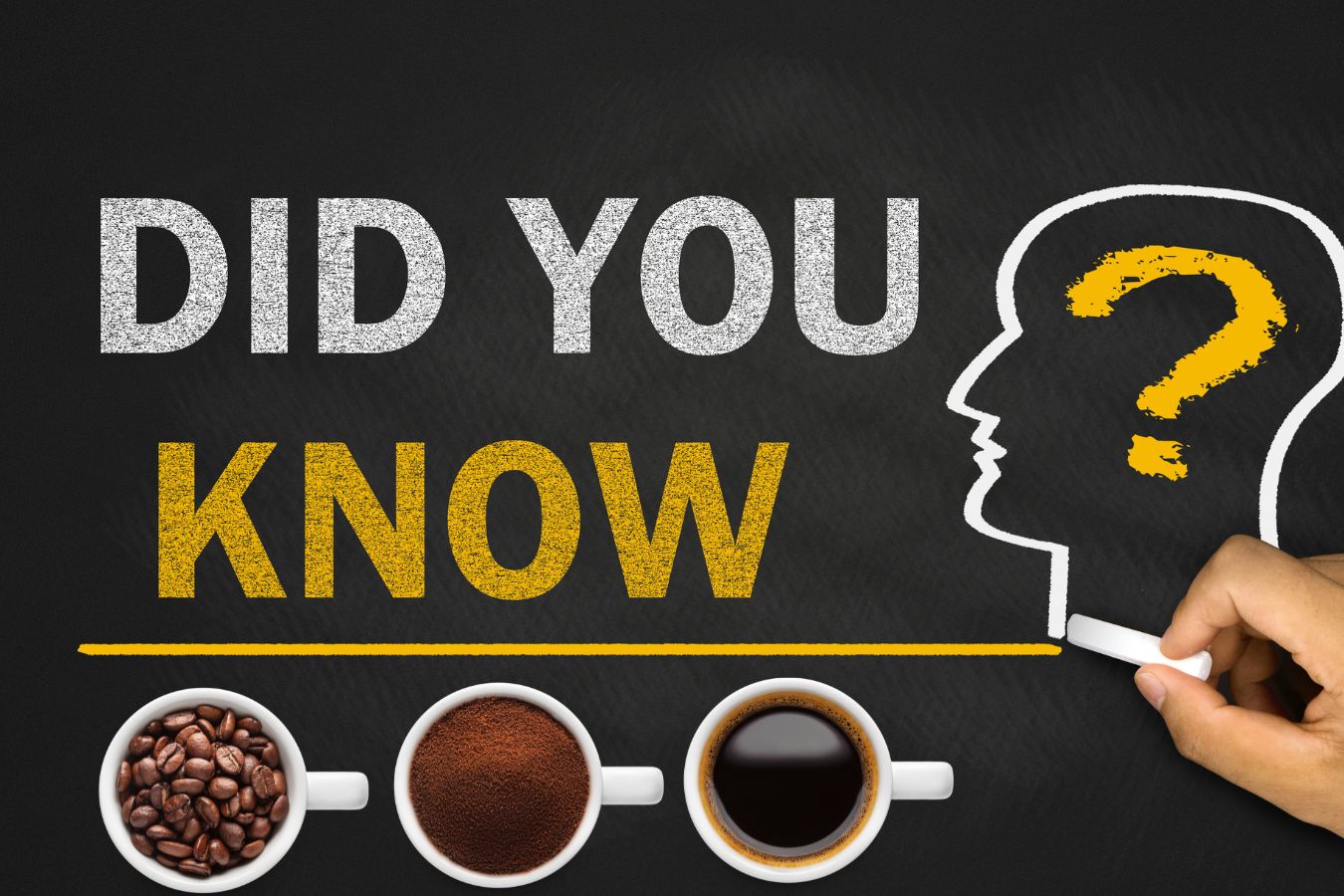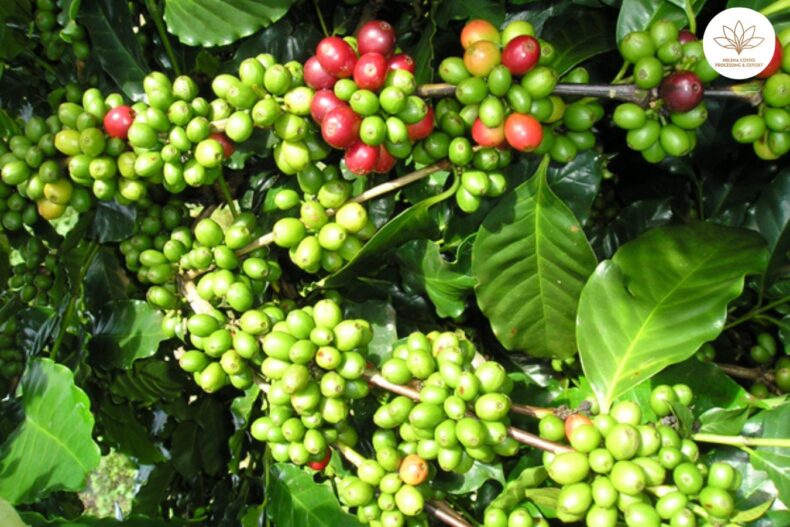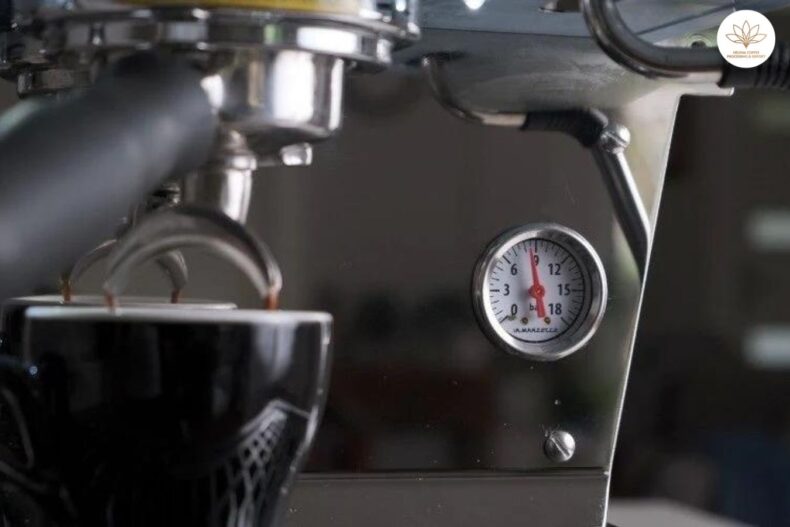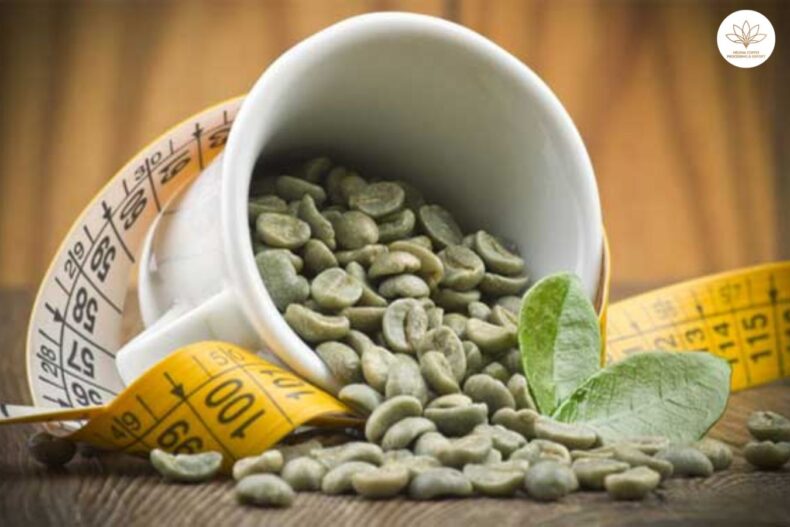
Coffee Basics You Should Know: Coffee is a popular drink widely consumed in the market and loved by many people. However, despite hearing a lot, not everyone knows its origin, characteristics… Therefore, in this article, Helena will send readers an overview of the basic knowledge about coffee below.
Legend of the coffee tree
According to a passed-down legend: There was a goat herder named Kaldi; once he took his goats out to eat, he discovered some goats in the herd. After eating a plant with white flowers and red fruits, he showed signs of running and jumping tirelessly until late at night.
He observed that, so he also tasted the fruit and confirmed its effectiveness. He then took this story to the monks at a nearby monastery. They visited the area and tested the fruit when they heard his story. Indeed, after using that fruit, their spirit is awake, and their energy is incredible. And they decided to turn it into a pre-prayer drink.
However, that is just a legend. The coffee plant native to the highlands of Ethiopia was discovered in the 9th century. It spread to Yemen and Egypt and, by the 15th century, to Turkey, Persia, Armenia, and North Fly. And then it was planted all over the world.
Coffee belt
Coffee is familiar, but not every country in the world can grow it. They can only be grown in places with fantastic weather all year round, abundant rainfall, and mild sunshine. New coffee beans for high yield, high quality. However, those lands are usually just around or below the equatorial belt and form a coffee belt called “The Bean Belt.”
So what is The Bean Belt? As an area located along the equator, between latitude 23 degrees North and parallel 23 degrees South, the land here has an altitude of 500 – 2000 meters above sea level; this is where the convergence of standard conditions standard for coffee develops.
Coffee-growing countries in the world
Currently, there are more than 70 countries that the belt passes through globally, but only 60 countries are eligible to grow this crop.
Coffee-growing countries are distributed in three regions: South-Central America, Africa, and Southeast Asia.
- South – Central America: considered the largest coffee farm in the world. The coffee here has a fruity smell and a very light aroma. Coffee growing and exporting countries: Brazil, Mexico, Guatemala, Costa Rica, Colombia…
- Africa region: Known as the cradle of coffee. This land has wide varieties and coffee. These include Ethiopia, Uganda, Kenya, Tanzania, etc.
- Southeast Asia: Many countries in this region grow coffee, and prominent names in coffee export quality and output: India, Indonesia, Vietnam, and Yemen;… Asian coffee taste smells Characteristic of earthy, mildly sweet, chocolatey, slightly bitter, and rich in flavor.
Coffee flavor by altitude
It can be said that many factors affect the unique flavor of coffee. Among them, the height of the growing area is considered the most crucial factor in determining the quality and taste of the coffee beans after roasting.
Because the altitude will help the coffee plant to have a longer growth cycle and slower the accumulation of nutrients in the beans, resulting in a more robust flavour, and firmer and heavier beans.
In addition, the coffee plant produces grown in high mountain areas is often cultivated according to organic methods, so the economic value is also higher. Therefore, altitude is considered a prerequisite factor affecting coffee quality and is as important as the seed source of the plant.
The characteristics of coffee beans change with altitude as follows:
- 600m: Coffee usually has a strong bitter taste, a simple taste.
- 600 – 760m: Coffee has a light earthy taste.
- 760 – 910m: At this time, coffee starts to taste sweet.
- 910 – 1200m: Coffee has a citrus, chocolate, and vanilla characteristics.
- 1200 – 1600m: Coffee has an intense fruity and floral aroma.
Coffee is imported into Vietnam
Coffee growing areas in Vietnam
Many coffee-growing regions in Vietnam include the Central Highlands, the South, Thanh Hoa, Nghe An, and Ha Tinh. However, the Central Highlands provinces are the most suitable for growing coffee in natural conditions.
This type of industrial crop grown here gives a very high yield and excellent seed quality, especially in Gia Lai, Dak Lak.
However, to have the best and best quality coffee varieties, it is impossible not to mention the place of origin from Lam Dong. In terms of conditions, this place fully converges favourable factors such as altitude, temperature, water, and light for top plants like Bourbon and Mocha to grow well.
Popular coffee
Currently, Vietnam grows many types of coffee, from traditional to hybrid. These are three distinct coffee lines commonly grown: Arabica, Robusta, and Cherry.
Arabica coffee
Arabica coffee has the scientific name Coffea Arabica. In Vietnam, this type of coffee is called Che coffee. The tree is suitable for growing in climates and soils above 600m high. The long shape of coffee beans makes them easy to distinguish from other beans. The caffeine content in this coffee bean accounts for 1-2%, so Arabica is not bitter, has a mild, pure aroma, and has a fruity taste.
Robusta
The scientific name of Voi coffee is Coffea Robusta, also known as Voi coffee. This is the most commonly grown coffee in Vietnam, accounting for more than 90% of coffee production. Robusta, in general, has a darker, more bitter, and bitter taste compared to Arabica. However, Voi coffee beans have very high caffeine content, so Voi coffee has good disease resistance and high yield.
Cherry coffee
Cherry, or Chari, is a type of Jackfruit coffee, not as commonly grown as Robusta or Arabica. But it is a coffee with a unique and different flavour; the faint aroma of jackfruit mixed with a sour taste brings a highly refreshing feeling. Many women love this taste of coffee because the coffee is not bitter.
In addition to the above coffee varieties, there is also a mutant Culi line on the Vietnamese market, which has both the taste of Robusta coffee and the taste of Arabica coffee.
Composition and structure of coffee berries
Structure of coffee fruit
It consists of 6 main components: stem, fruit skin, fleshy shell, husk, silk shell, and kernel, also known as the coffee bean.
Coffee stem
The stem will be the link between the fruit and the branch to keep the coffee cherries from falling due to external influences, so the structure is both supple and brittle, and easy to pick.
Fruit skin
This is the outermost layer of the coffee, which covers and protects the internal components. When unripe, the rind will be green, and when ripe, the skin will be red or yellow, depending on the variety.
Fleshy shell
The fleshy pods of the coffee are mildly sweet and edible. If comparing Arabica and Chari, Arabica’s rind is usually the most adorable and softest, while Chari coffee has a thicker skin.
This is the hard shell that protects the coffee beans after drying. After harvesting, people will remove the outer shell flesh slime, leaving only the inner surface and seeds. This shell is also released when processed, and farmers often use it to make bio-fertilizer for crops or as fuel.
Silk shell
The silk skin is the fragile part that covers the outside of the coffee bean. Depending on the variety, the silk shell will have different colors. For example, Robusta will usually be light brown, Arabica will be white, and Chari will be pale yellow.
Coffee filling
This is the part that creates the core value of the coffee tree. It consists of a hard outer part consisting of small oil-containing cells and an inner part composed of large and relatively soft cells. Each bead usually has two equal parts.
Chemical composition of coffee berries
In a whole coffee bean, there will be many different components, each of which plays a vital role in creating the flavor of the coffee bean.
Stem
It usually contains a lot of anthocyanins, so when ripe, the fruit is generally red. In addition, the peel also contains other substances such as Alkaloids, caffeine, tannins, and many other enzymes.
Fruit skin
Contains mainly soft and viscous cells. This part includes a lot of sugar, so the coffee has a sweet taste; it also supports the Pectinase fermentation process to help coffee taste better.
Fleshy shell
Because it is wrapped right outside the kernel, the rind still inherits a significant amount of caffeine, accounting for 0.4% of the weight of the coffee fruit.
Kernel
In fully ripe coffee beans, water accounts for 10 – 12%, then 9 – 11% Protein, 10 – 13% Lipid, 3-5% starch, 5 – 10% sugar. Depending on the variety, the chemical content in coffee beans will also vary.
Coffee processing method
There are three most popular processing methods of green coffee today: dry processing, wet processing, and honey processing.
Dry processing
ipe coffee after harvest will be removed impurities such as branches and leaves mixed in the fruit, then brought to the yard to dry in the sun without new milling.
Advantage: easy to do, doesn’t take much effort.
Cons: Dry coffee for a long time; if it encounters adverse conditions, the coffee will be moldy and damaged, affecting the quality of coffee. Therefore, this method is not usually used for high-class coffee lines like Arabica.
However, if this method is up to standard, the coffee can taste better than other methods, giving it a more prosperous, sweeter, and less sour flavour.
Wet processing
Processing by this method is often more complicated and elaborate than dry processing, requiring specialized machinery. Therefore, people often use this processing method for high-quality coffee, such as Arabica Moka.
Coffee right after harvesting will be carefully screened (only picking ripe beans, minimizing green ones). The coffee cherries will be ground to separate the shell and then sent to the water channel for treatment; after removing impurities, the coffee skin will be put into the water tank to perform the processing stage.
Fermentation removes slime. Fermentation is only complete when the husk becomes rough and does not feel slippery.
Finally, the coffee beans will be washed and sun-dried on a drying rack to lower the moisture content of the beans to 10 – 12%. When drying, need to spread evenly to ensure uniform drying. After drying, it will be bagged for preservation or processed for other refining stages.
This method produces a cleaner product with a brighter taste and a more robust sweetness compared with other processing methods.
Processing honey
The standard for processing this kind of coffee flower honey is to choose 100% ripe fruit.
This processing method is quite similar to wet processing. However, they will not remove all the slime before it dries. Therefore, the colour of coffee beans is very similar to the colour of honey.
The coffee has wonderful sweetness, balanced acidity, and a light fruit aroma in this processing method.
Coffee roasting
Why roast coffee?
Coffee beans cannot be used directly to eat like other beans but can only be ground into a powder mixed with drinking. Therefore, before grinding, coffee must be roasted because the roasting process will change the chemical components in the coffee beans, creating a characteristic aroma and taste when drinking.
The process of transforming coffee beans during the roasting
Roasting temperature – the primary factor that shapes the flavour of the coffee. So, the right temperature to start roasting coffee will be from 100 degrees Celsius until the end is 240 degrees Celsius. During this heating process, the ingredients in the coffee will begin to change:
When reaching 100 degrees C
The coffee beans start to heat up, evaporate, and shrink.
From 0 – 150 degrees C
The amount of water continues to be lost; the seeds begin to turn yellow and continue to shrink, along with the aroma that begins to emanate.
From 150 – 180 degrees C
Coffee beans begin to turn dark yellow, and the drainage process ends, so the coffee beans do not shrink and have a more intense aroma.
From 180 – 200 degrees C
Coffee beans turn light brown, bloom quickly, have a complex aroma, and the ingredients inside can be ground easily.
From 200 – 210 degrees Celsius
Coffee beans begin to expand to the point of explosion; smoke begins to rise to create a complex aroma and spread further.
From 210 – 230 degrees C
Coffee beans continue to swell due to the release of carbon dioxide and more explosions.
From 230 – 240 degrees C
The seeds are now turning a dark brown color with a distinctive flavour, and this is the best time to grind and start mixing.
Finished coffee
Currently, there are many different ways of processing coffee, so there are more and more types of finished coffee such as:
Pure roasted coffee
Coffee is made from 100% natural coffee beans, roasted and ground into powder, without adding additives or impurities such as soy, popcorn, or colourants. The advantage of pure coffee is keeping the original flavour and inherent deliciousness of coffee.
Instant coffee
Realizing that powdered coffee is inconvenient and takes a long time to prepare, manufacturers began to find ways to help users enjoy coffee more conveniently. They pre-mix the coffee powder with flavor enhancers, additives, sugar, and milk during the production process to achieve the desired taste.
Users only need to mix this powder with boiling water, stir and enjoy; it takes less than a minute to make a cup of coffee.
As can be seen, the advantage of instant coffee is that it is very convenient and does not take much time to prepare for a long time. However, its disadvantage is that it contains flavouring agents and additives, so it partly loses the taste of pure coffee.
Coffee beverage
If even making instant coffee takes up a lot of your time or you don’t have the resources to make it, a can of ready-to-drink coffee can be beneficial. Liquid coffee is similar to instant coffee but is pre-made; just open the lid to enjoy. The advantage of this type of coffee is that it is quick and convenient.
Coffee brewing methods in the world
Coffee is the most loved and chosen drink on the market today, in Vietnam in general and in the world in particular.
However, not everywhere do people make coffee according to a standard recipe, but depending on the traditions, culture, rituals of each country, … taste that they have their way of preparing. Some of the most popular coffee-making methods include:
Italian Cappuccino, Espresso, and Latte
If anyone has ever asked: “What kind of coffee drink is most loved by many people,” it can be said that these three brands are suitable for both men and women, especially those who love sweets.
Making coffee is not too fussy and complicated, but this method requires choosing the best coffee with beautiful color and smooth consistency to create a cup of coffee with the right taste. Mixing Espresso with milk according to specific standards will make Latte and Cappuccino.
Buna coffee in Ethiopia
This is the hometown of coffee; people are very proud of this drink because goat herders first found this coffee in Ethiopia. Therefore, they have a different way of making and enjoying coffee different from other countries. Instead of milk with sugar, Ethiopians will make coffee with salt or butter.
Turkish Coffee of Turkey
As a famous coffee in the world, this form of coffee preparation is straightforward, and anyone can do it; people need to add coffee powder to water and then boil it directly on the stove until hot. . . . Smell, have a bold color, pour into a cup and enjoy.
Danish Coffee
The Danish way of making coffee is similar to Italian Capuchino, Espresso, and Latte. The Danes will use pure coffee for drinking with fresh milk or cream without adding other flavors and impurities.
Ireland of Ireland
This is a unique way of preparing Irish people in coffee-making; instead of using coffee, simply adding milk, sugar, and salt, they will put a little Irish whiskey, sugar, and a little cream in hot coffee. The government and the idea of that combination date back to the 1940s to this day; it is often referred to as a coffee-flavoured cocktail or a liqueur-flavoured coffee.
Preserving coffee
In addition to preparing coffee, the preservation stage is also considered an essential factor in making a delicious coffee cup. Here are some ways to preserve standard coffee:
How to store powdered coffee:
Powdered coffee absolutely should not be left in the air for a long time because the air will lose the taste of the coffee, easy to mould, so to ensure the quality, you should put the coffee powder into a glass plastic bottle with a cover tightly.
How to store coffee beans:
Coffee is inherently hygroscopic, and moisture is the factor that loses its original flavour. And the way to preserve coffee beans is similar to powdered coffee.
However, if you buy a lot at once for coffee beans, you can divide them into small portions, put them in zipper bags (airtight bags) or vacuum bags, then wrap them in foil and leave them in the fridge.
This method allows you to store coffee beans for up to a month. When using, please take out the coffee beans and let them come to room temperature for the coffee beans to melt the ice and then grind them into a powder.
Conclude
Knowledge about coffee is quite a lot to understand fully, and from planting, harvesting, roasting, preparing, and preserving, you need to have a long time to learn. However, hopefully, with the above general knowledge, you can understand more about them.


